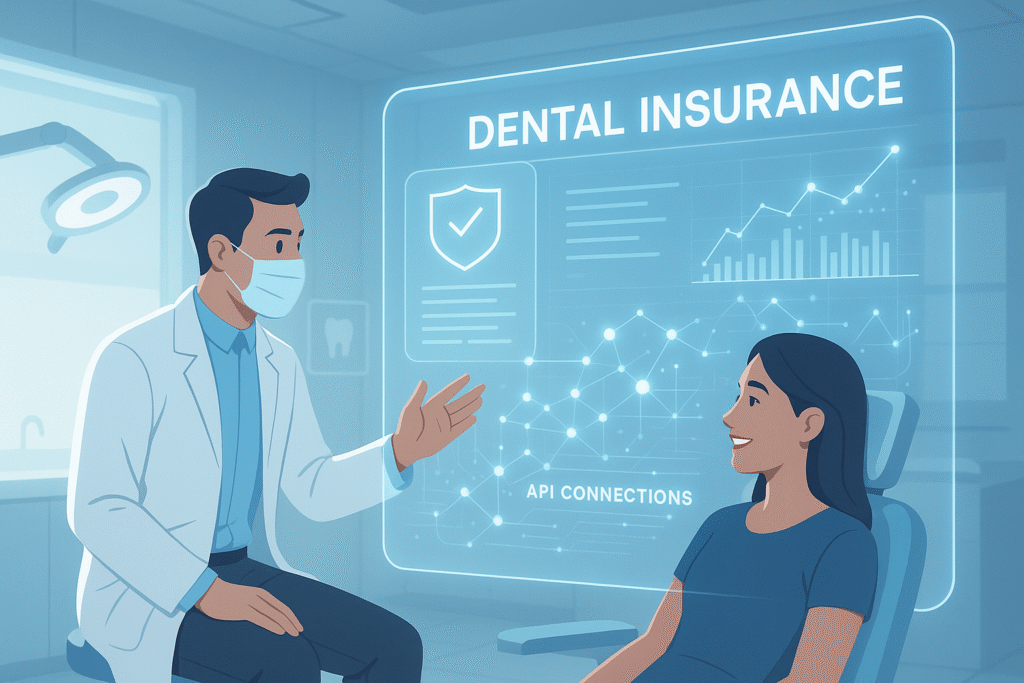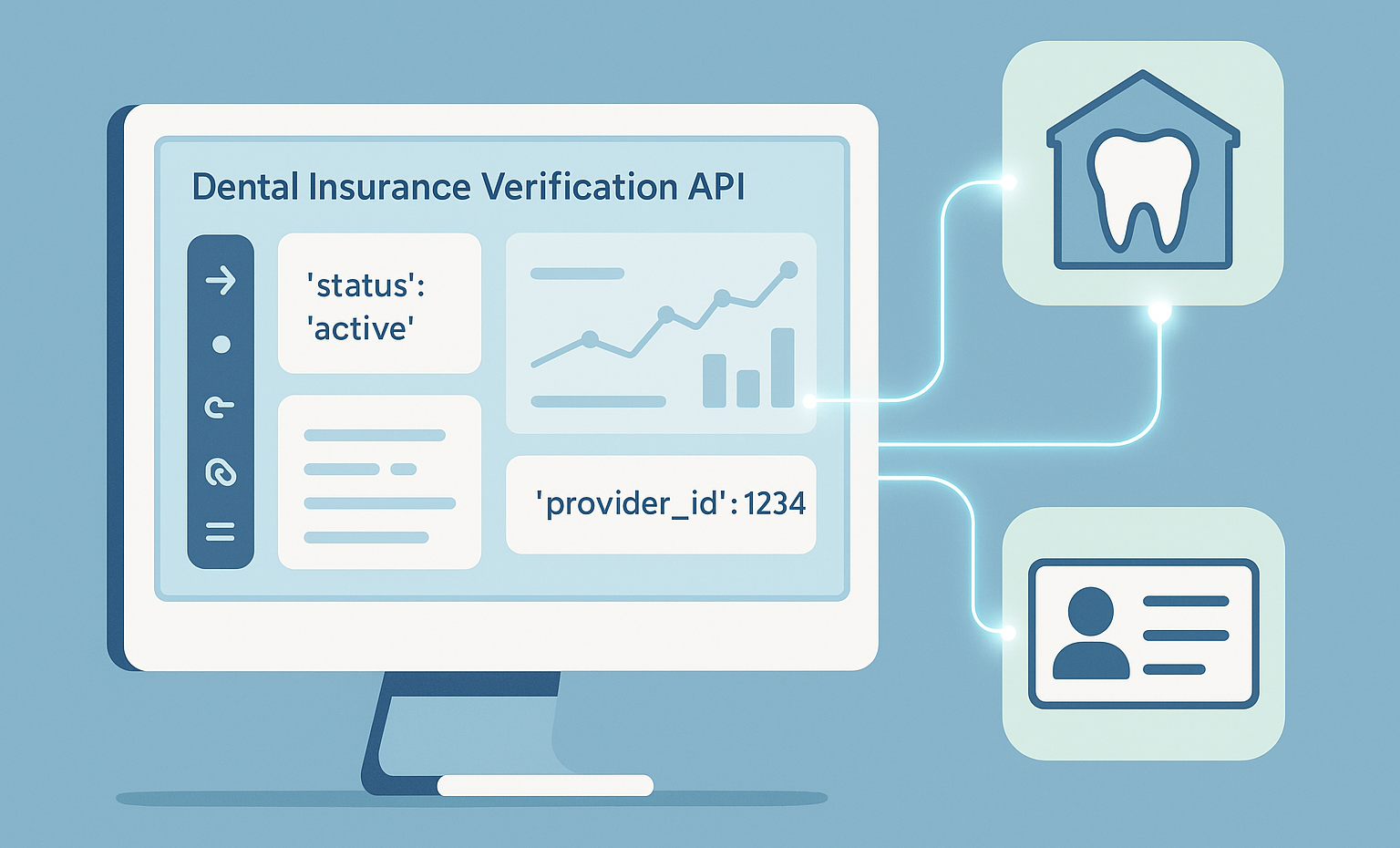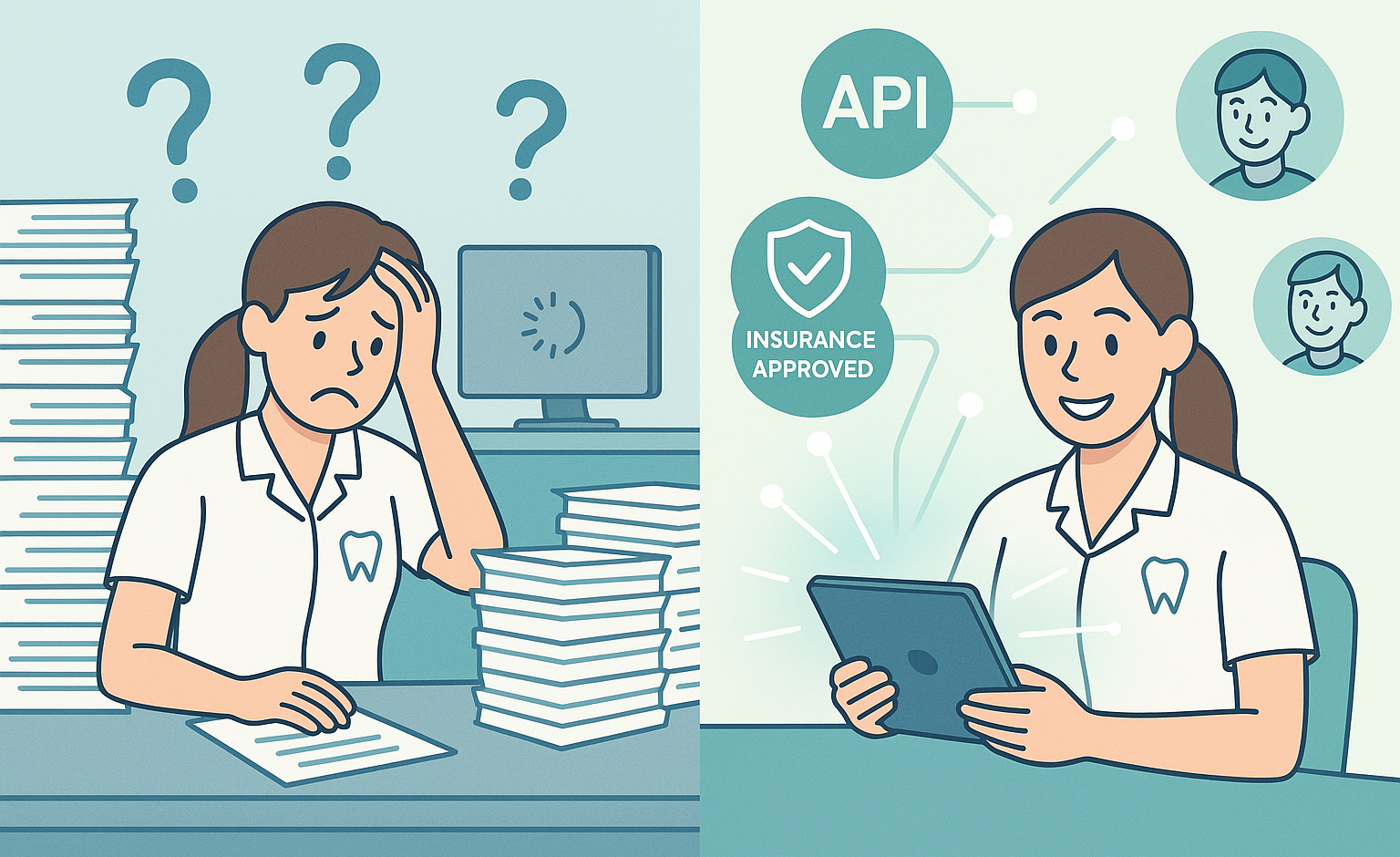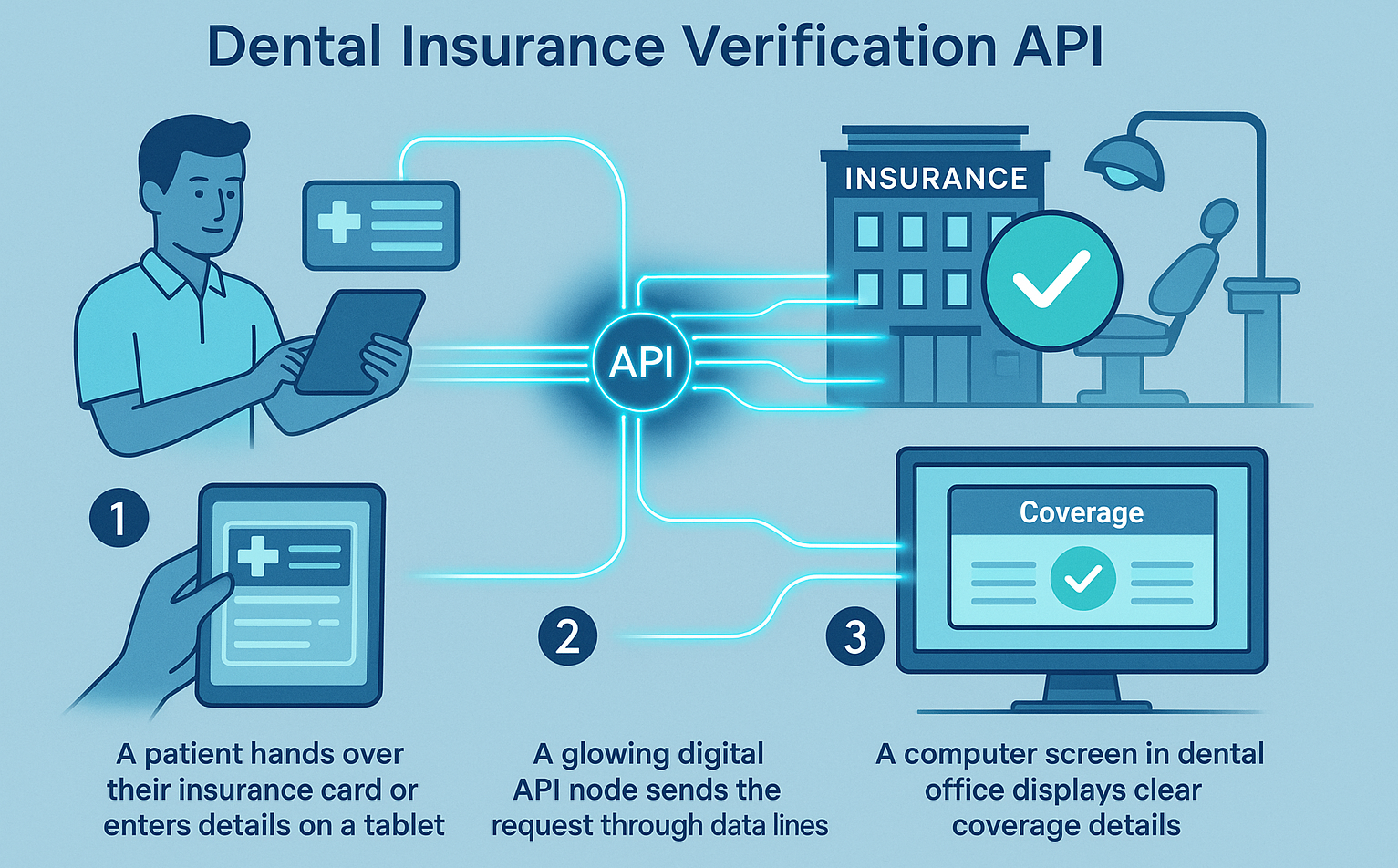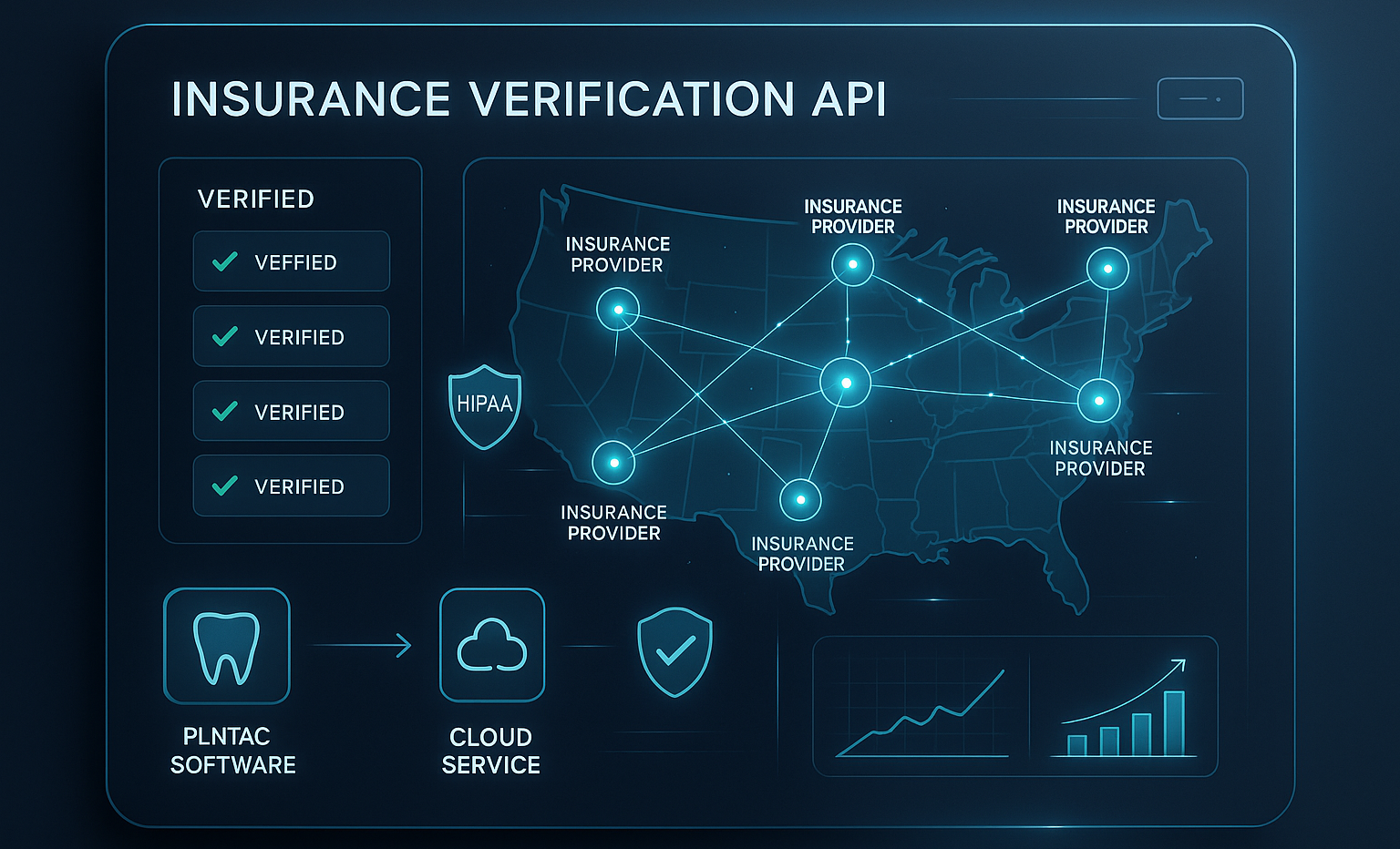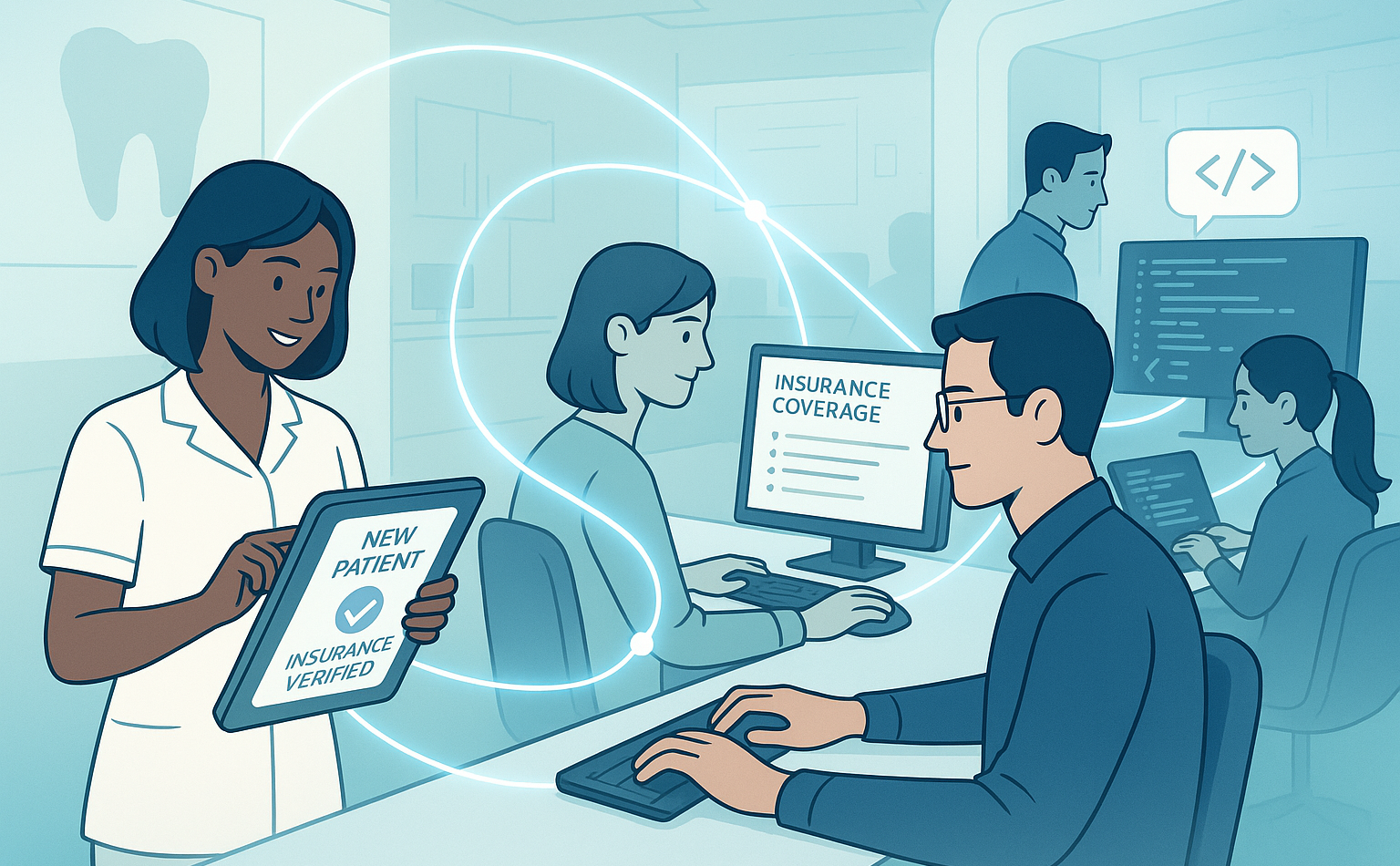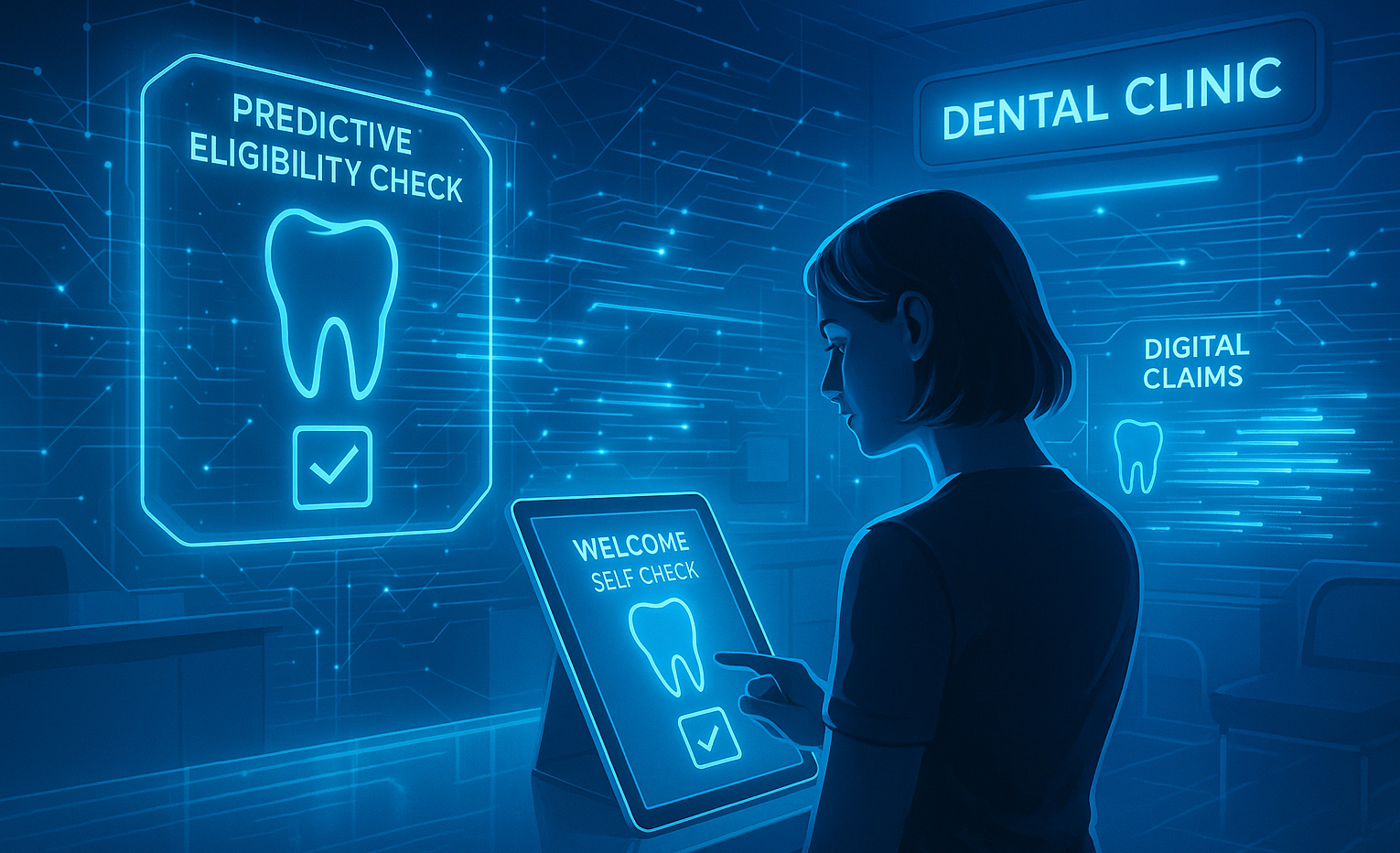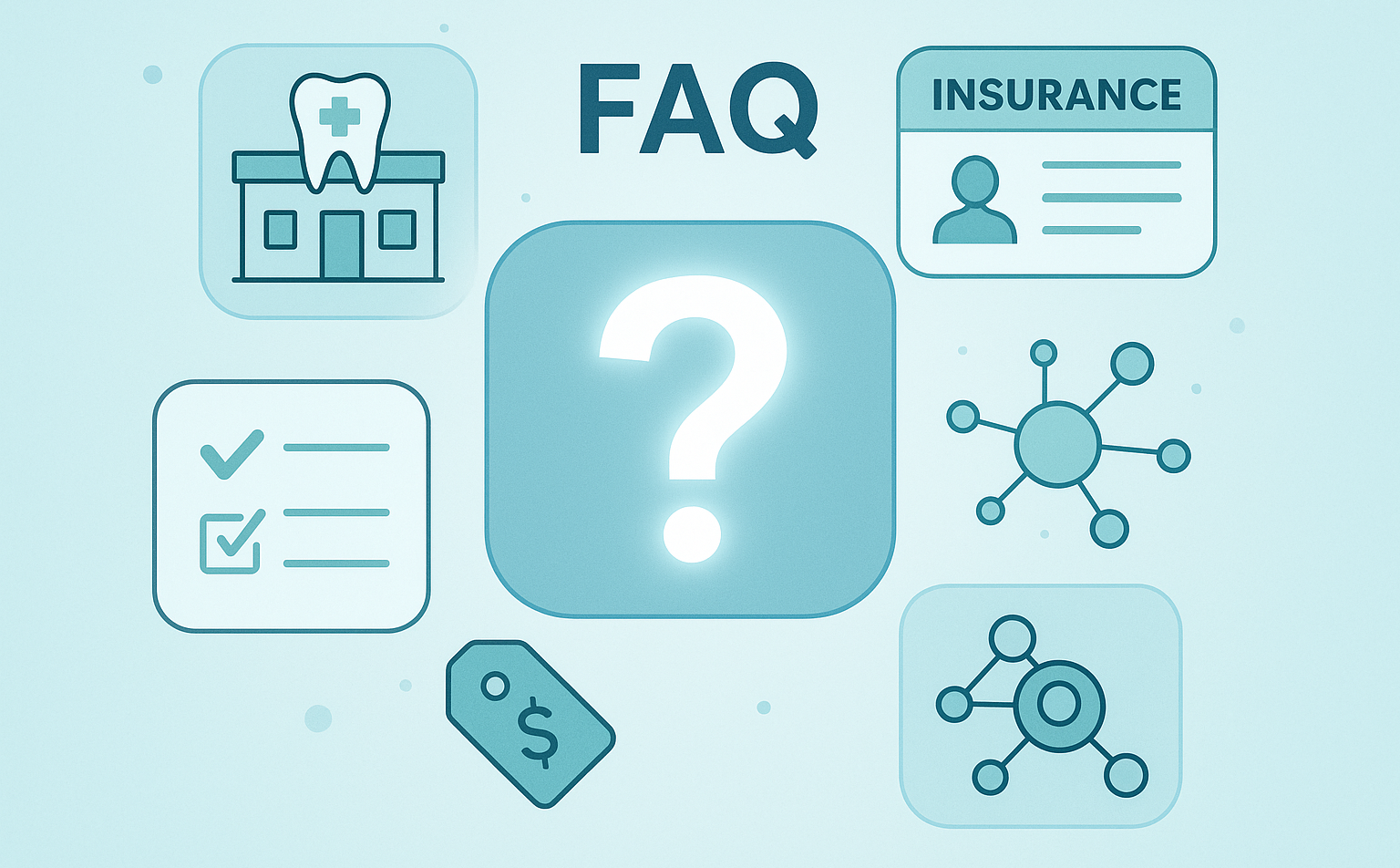Introduction
If you’ve ever worked in a dental office, you know the drill—before a patient even sits in the chair, staff often spend what feels like forever calling insurance companies, waiting on hold, and double-checking paperwork just to confirm coverage. It’s frustrating, time-consuming, and honestly, it keeps your team from focusing on what really matters: patient care.
Here’s the good news: you don’t have to keep doing it the old-fashioned way. Thanks to insurance verification APIs, dental practices can now check a patient’s eligibility in real time. No more endless phone calls, no more guesswork—just instant, accurate answers. And the impact is huge. Studies show that administrative tasks tied to insurance can eat up nearly one-third of a dental office’s time. Imagine what your team could do if that time went back into patient relationships and smoother operations.
By combining the power of APIs with user-friendly chatbots, dental offices can finally simplify one of the most frustrating parts of their day—while giving patients the clarity and confidence they deserve before treatment even begins.
how to get insurance to pay for eyelid surgery
Insurance for Churches in Alabama
How Much Is an Ultrasound Without Insurance?
5 Essential Reasons Why Your Business Needs Insurance
What is a Dental Insurance Verification API?
Let’s break this down without the tech jargon. An API, or Application Programming Interface, is basically a digital bridge that lets two different systems “talk” to each other. Think of it like a translator between your dental office software and an insurance company’s database.
In the old days, verifying a patient’s dental coverage meant your staff had to call the insurance company, wait on hold, and then manually jot down benefits. Not only is that slow, but mistakes happen easily. Now imagine instead that your practice management software can instantly “ask” the insurance provider’s system for details—and get the answer back in seconds. That’s exactly what a Dental Insurance Verification API does.
For example, when a new patient books an appointment, your front desk can enter their insurance member ID and date of birth into your system. Behind the scenes, the API connects directly to the insurance provider’s database, pulls up eligibility and coverage details, and displays them right inside your software. No phone calls. No guesswork. Just accurate, real-time information like:
-
Is the patient’s plan active?
-
What’s their annual maximum?
-
Are cleanings covered at 100%?
-
How much is left for major procedures?
In other words, an API turns hours of back-and-forth into a few seconds of automated clarity, giving your team and your patients the confidence to move forward without delays.
Why It Matters? (Pain Points & Benefits)
If you’ve ever handled insurance verification the traditional way, you already know the pain points. Long phone calls. Faxing forms back and forth (yes, faxes are still a thing in dentistry). Endless delays while waiting for a representative to confirm basic coverage details. And let’s be honest—manual entry often leads to mistakes, which can later turn into denied claims and frustrated patients.
That’s where an Insurance Verification API changes the game. Here’s why it matters:
⏱️ It saves serious time.
Instead of tying up your front desk staff with hold music, APIs pull real-time data directly from the insurance provider’s system. What used to take 20–30 minutes can now be done in seconds.
✅ Fewer claim denials.
Most claim rejections happen because of incorrect or outdated insurance info. With instant verification, your team has accurate data upfront, reducing those costly and stressful denials.
😊 Happier patients.
Nobody likes financial surprises, especially when it comes to dental bills. Real-time verification means you can tell patients exactly what’s covered before they sit in the chair. That transparency builds trust—and keeps patients coming back.
📡 Real-time coverage insights.
From preventive care percentages to remaining annual maximums, an API gives you a clear picture of coverage on the spot. That means you can plan treatments with confidence instead of playing phone tag later.
In short, APIs don’t just make life easier for your team—they directly improve the patient experience and the financial health of your practice. It’s a win-win.
How a Dental Insurance Verification API Works
So, how does this actually play out in a dental office? Don’t worry—no tech degree required. Here’s the step-by-step flow:
-
Patient provides their insurance info.
When a new or returning patient checks in, they share basic details like their insurance provider, member ID, and date of birth. -
The API sends a request.
Instead of your front desk calling the insurance company, the API automatically sends a secure digital request straight to the insurer’s database. -
Insurance company responds instantly.
The insurer’s system replies through the API with the patient’s current eligibility and benefits information. -
Coverage details show up in your software.
Within seconds, your practice management system displays the results—active status, coverage percentages, deductibles, and remaining annual maximums.
💡 Think of it this way: instead of your staff waiting on hold for 20 minutes just to ask, “Does John’s plan cover cleanings?”, your software simply asks the insurance company directly—and gets the answer back in a blink.
Insurance Verification API
Not all APIs are created equal. If you’re a dental practice considering automation, it’s important to know what separates a good insurance verification API from a mediocre one. Here are the features you’ll want to keep an eye on:
🔍 Real-time verification
The whole point of using an API is speed. A solid API should deliver eligibility and coverage details within seconds—not hours or days. That instant response time is what keeps your front desk running smoothly.
🌎 Wide insurance network coverage
Your patients don’t all use the same insurance provider. Look for an API that connects with a broad range of payers and networks. The wider the coverage, the less you’ll need to rely on phone calls for those “outlier” plans.
🔒 Secure & HIPAA-compliant
We’re talking about sensitive health data here. Any API you use must follow strict HIPAA guidelines and use secure encryption protocols. This keeps your patients’ information safe and your practice compliant.
🖥️ Easy integration with practice software
The best APIs play nicely with the systems you already use—whether that’s Dentrix, Eaglesoft, Open Dental, or another platform. Ideally, it should integrate so seamlessly that your staff hardly notices it’s there; the verification just happens.
📈 Scalable for growing practices
If you’re part of a group practice or planning to expand, scalability is key. A good API can handle hundreds of verifications per day without slowing down, making it future-proof as your patient base grows.
Dental Insurance Verification APIs
Understanding where and how these APIs fit into everyday dental workflows makes their value crystal clear. Here are some common scenarios where dental insurance verification APIs shine:
🦷 Dental practices verifying new patients
When a new patient calls or walks in, the front desk can quickly check their insurance eligibility before scheduling appointments. This speeds up the intake process and helps avoid surprises later on.
💳 Billing departments checking coverage before treatment
Before any procedure, billing teams can confirm coverage details—like deductibles, copays, or annual maximums—to ensure claims go through smoothly and patients know their out-of-pocket costs upfront.
💻 Developers integrating APIs into dental management software
For software creators building practice management tools, embedding insurance verification APIs means offering users a seamless experience that reduces manual work and boosts accuracy.
Each of these use cases highlights how the API acts as a behind-the-scenes helper, making insurance verification faster, easier, and more reliable—no matter who’s using it.
The Future of Dental Insurance Verification
The dental industry is on the brink of some exciting changes, thanks to the power of AI and APIs working hand in hand. Here’s a glimpse of what’s coming next:
🤖 AI-powered predictive eligibility checks
Imagine a system that doesn’t just confirm if insurance is active, but also predicts potential coverage issues before they happen—like flagging if a patient is close to hitting their annual max or if certain procedures might require prior authorization. AI can analyze patterns and alert your team proactively, saving time and headaches.
⚡ Faster claims processing
As APIs get smarter and more integrated, claims won’t just be verified quickly—they’ll move through the system faster too. Real-time insurance verification combined with automated claim submission means fewer delays, faster payments, and a healthier cash flow for your practice.
🖥️ Patient self-check portals
The future also puts more power in patients’ hands. Many dental offices will offer portals where patients can verify their coverage themselves before even booking an appointment. This transparency improves patient trust and streamlines office workflows.
Dental insurance verification is evolving beyond just “checking coverage.” It’s becoming a smart, predictive, and patient-friendly part of modern dental care. Practices that embrace these technologies will not only save time and money but also create a smoother experience for everyone involved.
Conclusion
Dental insurance verification doesn’t have to be a slow, frustrating bottleneck in your dental practice. Thanks to modern APIs, what once took hours of phone calls and paperwork can now happen instantly, accurately, and securely. These digital tools are transforming how dental offices verify coverage—saving time, reducing claim denials, and improving the overall patient experience.
For dental practices, adopting automated insurance verification tools means freeing up your team to focus on what truly matters: delivering great care. And for developers, there’s a growing opportunity to build innovative solutions that connect dental offices with insurance data in smarter, faster ways.
The future of dental insurance verification is here—and it’s powered by APIs. It’s time to embrace the change and reap the benefits.
Frequently Asked Questions (FAQs)
Q: What does insurance verification involve?
A: Insurance verification is the process of confirming a patient’s insurance coverage before treatment. It typically involves checking if the insurance plan is active, understanding what procedures are covered, the patient’s deductible, copay amounts, and any limits like annual maximums. This helps dental offices avoid surprises and ensures claims get processed smoothly.
Q: What is an API in dental?
A: In dental care, an API (Application Programming Interface) is a tool that allows dental software—like appointment schedulers or billing systems—to communicate with other systems, such as insurance providers. For example, a dental insurance verification API helps your software instantly check patient coverage without manual calls or paperwork.
Q: How much does ZUUB cost?
A: ZUUB pricing can vary based on the services and scale you need. It’s best to visit the official ZUUB website or contact their sales team directly for the most accurate and up-to-date pricing information.

